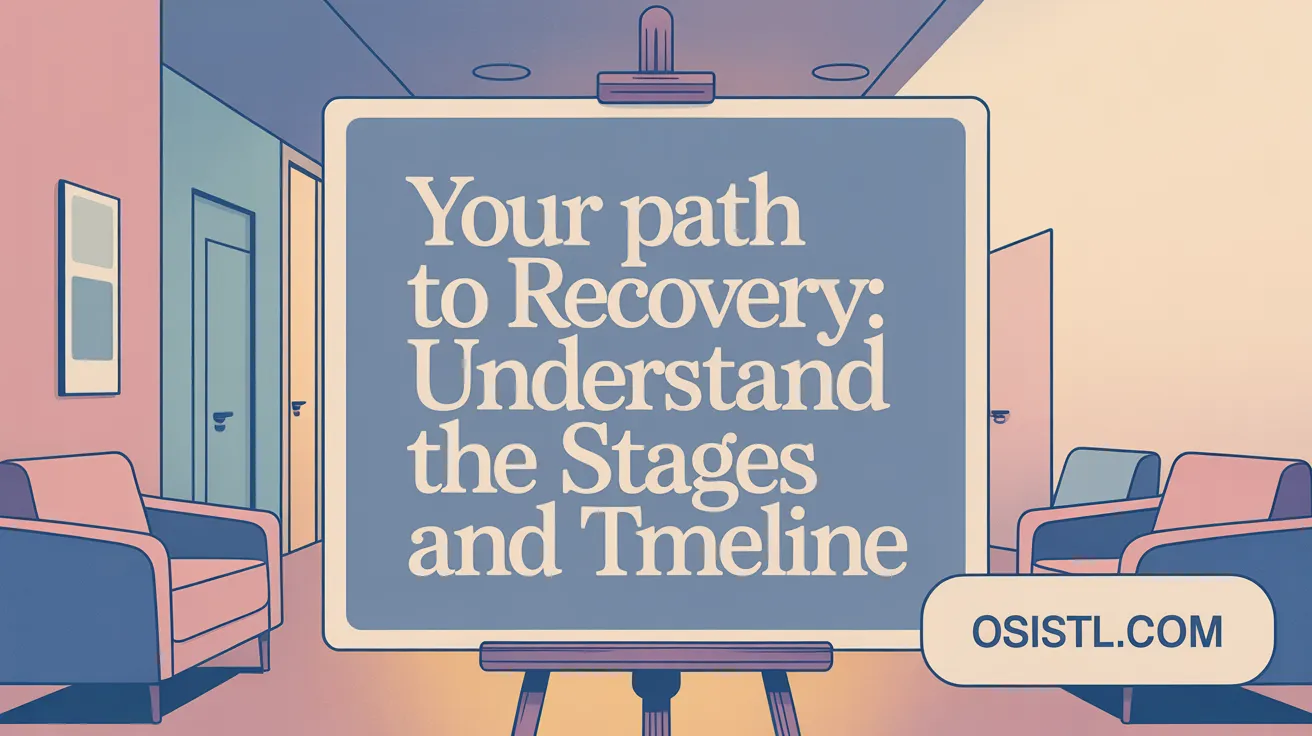Introduction to Microdiscectomy Recovery
Microdiscectomy is a minimally invasive surgical procedure designed to relieve nerve pressure by removing part or all of a herniated disc in the lower spine. As with any surgery, understanding the recovery timeline and what to expect can empower patients for a smoother healing process. This article outlines the typical stages of recovery, essential post-operative care instructions, rehabilitation strategies including physical therapy, activity precautions, signs of complications, and factors influencing recovery outcomes to offer readers a clear roadmap for their post-surgical journey.
Typical Recovery Timeline and Stages After Microdiscectomy
 The recovery timeline after a microdiscectomy typically spans several weeks to months. Initially, the focus is on wound healing and pain management, which generally lasts for the first few weeks after surgery. During this period, patients should follow activity restrictions, such as avoiding heavy lifting and excessive twisting, while engaging in gentle walking and basic exercises as advised.
The recovery timeline after a microdiscectomy typically spans several weeks to months. Initially, the focus is on wound healing and pain management, which generally lasts for the first few weeks after surgery. During this period, patients should follow activity restrictions, such as avoiding heavy lifting and excessive twisting, while engaging in gentle walking and basic exercises as advised.
As healing progresses, usually around 4 weeks post-surgery, patients can gradually start more active rehabilitation. This includes physical therapy aimed at restoring mobility, strengthening core muscles, and improving posture. Physical therapy often involves exercises like pelvic tilts, nerve mobilizations, and light resistance training.
From about 6 to 12 weeks, many patients increase their activity levels, return to light work duties, and participate in low-impact activities such as walking or swimming. Full recovery, which involves resuming most daily activities and possibly sports, typically occurs within this period, although individual recovery rates may vary depending on overall health and adherence to rehabilitation programs.
During the later phases, patients focus on maintaining spine health through continued exercise, proper ergonomics, and activity modifications. Follow-up appointments with healthcare providers help monitor progress and address any concerns. The entire process emphasizes gradual reintegration into normal life while safeguarding spinal recovery.
For more detailed information about the typical recovery phases, you can search for "Microdiscectomy recovery timeline and phases".
Overview of Microdiscectomy and Post-Surgical Expectations

What microdiscectomy involves
Microdiscectomy is a minimally invasive herniated disc surgery procedure designed to relieve pressure on nerves caused by a herniated disc in the lower back. It typically involves making a small incision of about 1 to 2 inches, through which the surgeon uses a microscope to view the affected area. The goal is to carefully remove part or all of the herniated disc material pressing on the nerve. See also Microdiscectomy surgery overview.
Surgical procedure details
The surgery usually takes less than an hour and is often performed on an outpatient basis, meaning patients can go home the same day or the next. During the operation, a tiny incision is made over the spine, and surgical tools along with the microscope help the surgeon to precisely excise the herniated disc tissue. This controlled removal aims to decompress the nerve root and alleviate symptoms. More details available at Microdiscectomy procedure overview.
Post-surgery symptoms and symptom relief
Postoperative recovery typically involves experiencing some stiffness or soreness in the back, which should improve over the course of weeks. Relief from symptoms, such as leg pain or numbness, can be immediate or take several days to weeks to fully develop. Most patients gradually return to normal activities within 2 to 8 weeks, depending on individual healing response. The recovery process often includes working closely with physiotherapists to strengthen back muscles and learn proper movement techniques. Refer to Postoperative care for lumbar microdiscectomy and Lumbar Microdiscectomy Physical Therapy Protocol for rehabilitation guidelines.
If you are undergoing a microdiscectomy, it is crucial to follow your healthcare provider's postoperative instructions, including wound care, activity modifications, and attending follow-up appointments to promote optimal healing. See also Incision care instructions and medication guidelines after surgery. With proper care and rehabilitation, most patients experience significant relief from their preoperative symptoms.
Essential Care Instructions for Wound and Pain Management
Post-operative care after microdiscectomy involves several important steps to ensure proper healing and pain control. Patients should keep their incision clean and dry at all times. Daily washing with warm, mild soap and water is recommended, and they should avoid using hydrogen peroxide or alcohol which can irritate the skin. The dressing should be changed as instructed, typically once a day, and the area kept dry to prevent infection.
Pain medication management is crucial. Prescribed pain medicines should be taken exactly as directed by the healthcare provider. Over-the-counter medications may also be used with guidance if additional relief is needed. Patients should avoid alcohol and be cautious to prevent side effects like nausea or dizziness. If side effects occur, they should contact their doctor for advice. For detailed pain management strategies, see Pain management for microdiscectomy patients.
The use of heat, such as warm packs or heating pads on low, can help reduce muscle stiffness and soreness. However, care must be taken to avoid placing heat directly on the incision or during sleep to prevent burns or irritation. Precautions include not sleeping with a heating pad on the affected area and ensuring skin protection. Refer to Heat application for muscle stiffness for more information.
Diet should be normal post-surgery, but maintaining a high-fiber intake along with adequate hydration is recommended to prevent constipation, which can be caused by pain medications. This helps to reduce straining during bowel movements and supports overall recovery. See Diet and bowel health post-surgery.
Following these wound and pain management instructions can significantly improve the recovery process, reduce discomfort, and prevent complications. If there are signs of infection, persistent pain, swelling, or other concerning symptoms, patients should contact their healthcare provider promptly. For guidance on Follow-up care and emergency signs after microdiscectomy, consult the related resources.
Rehabilitation Strategy: Physical Therapy and Exercises Post-Surgery
Phases of physical therapy
Recovery after microdiscectomy is managed through a structured, phased approach. Initially, in the first 2 weeks, the emphasis is on reducing pain and inflammation, activating deep supporting muscles like the transversus abdominis, multifidi, and glutes, and encouraging gentle movement. The goal is to regain basic mobility without straining the surgical site.
Between 3 to 6 weeks, therapy shifts to re-establishing neuromuscular control, ensuring proper engagement of core muscles, and mobilizing soft tissue, including scar tissue. From 6 weeks to 3 months, exercises focus on building strength, improving flexibility, and restoring normal gait and posture. Progression is gradual, and activity levels increase according to individual response.
Beyond three months, therapy aims at recovery of full strength, endurance, and return to sports or work activities, including agility and more vigorous movement. A carefully tailored plan prevents setbacks and supports long-term spine health. See Lumbar Discectomy Rehabilitation Phases for more details.
Types of exercises recommended
Patients are typically guided through a variety of gentle stretching, core stabilization exercises, and strengthening routines. These include activating the transversus abdominis, knee rolling, pelvic tilts, bridges, and nerve mobilizations to reduce nerve tension. Post-surgical programs may incorporate aquatic therapy with walking, balance exercises, and multidirectional arm movements, especially once the incision has healed.
As strength improves, exercises such as modified squats, hip hinges, and light resistance training with resistance bands can be progressively added. Activities like yoga, Pilates, and low-impact aerobic exercises are introduced cautiously to enhance flexibility and endurance. For an in-depth exercise guide, refer to Lumbar Microdiscectomy Physical Therapy Protocol.
Timeline for physiotherapy initiation
Physiotherapy usually starts around 2 to 6 weeks after surgery, once initial healing has progressed. Early sessions focus on education about body mechanics, safe movement patterns, and gentle mobility. As healing continues, therapy intensifies, aiming for full strength and functional mobility by 3 to 6 months. Learn more at Postoperative care for lumbar microdiscectomy.
Benefits of rehabilitation
Engaging in a structured physiotherapy program significantly enhances recovery by restoring muscle strength, improving flexibility, and promoting proper spinal biomechanics. It reduces the risk of re-injury, alleviates residual pain, and accelerates return to daily activities. Effective rehab supports long-term spine stability and overall functional independence.
Discover more about the specific protocols and exercises by searching "Physical therapy protocols after microdiscectomy" for detailed guidance tailored to individual needs.
Activity Precautions and Return to Routine

What activity restrictions and precautions should patients observe during recovery from microdiscectomy?
Patients are advised to avoid heavy lifting, bending, twisting, and prolonged sitting during the initial recovery phase. These restrictions help prevent strain on the healing spinal area and reduce the risk of re-injury. It is recommended to limit activity intensity until cleared by a healthcare provider. See more about Postoperative care for lumbar microdiscectomy and Lumbar Discectomy Rehabilitation Phases.
Gradual increase in activity is encouraged, focusing on proper posture and safe movement techniques. Patients should pay attention to pain signals and avoid activities that cause increased discomfort or stress on the back. For detailed guidance, refer to Microdiscectomy recovery information Alberta Health and Lumbar Microdiscectomy Physical Therapy Protocol.
What are the estimated timeframes for returning to normal activities and work after microdiscectomy?
Most individuals are able to resume light activities such as walking and basic chores within 4 to 6 weeks. See Microdiscectomy recovery timeline for typical recovery phases.
Full return to work, especially for jobs involving physical tasks, typically occurs between 8 to 12 weeks. The exact timing depends on individual recovery, the nature of their work, and adherence to post-operative precautions. More on this is explained in Recovery time after microdiscectomy.
Patients should consult their surgeon before resuming strenuous activities, driving, or engaging in sports, and follow tailored rehabilitation plans to ensure safe and effective recovery. See Post-Operative Lumbar Microdiscectomy Care and Microdiscectomy surgery overview for post-op guidelines.
Additional guidelines
- Driving: Usually safe around 2 to 4 weeks post-surgery once pain and strength allow. For details, check Driving and light activities post-surgery.
- Sexual activity: Can often be resumed as tolerated, avoiding positions that strain the back. See also Resuming sexual activity after microdiscectomy.
- Lifting and bending: Should be minimized and performed with proper techniques once cleared. Refer to Safe lifting and bending techniques and Recovery After Spinal Surgery.
Following these recommendations will help optimize healing, reduce complications, and facilitate a quicker return to daily life. For comprehensive post-op care, visit Microdiscectomy postoperative care.
Monitoring for Complications and When to Seek Help
 After a microdiscectomy, it is essential for patients to keep a close watch on their recovery and be aware of signs that may indicate complications. Patients should seek immediate medical help if they experience symptoms such as increased redness, swelling, or any discharge at the incision site, which could suggest infection. Fever over 38°C, severe or worsening pain that does not respond to prescribed medications, or neurological symptoms like numbness, weakness, or loss of sensation in the legs are also warning signs. Additionally, loss of bladder or bowel control is a serious symptom requiring urgent medical attention.
After a microdiscectomy, it is essential for patients to keep a close watch on their recovery and be aware of signs that may indicate complications. Patients should seek immediate medical help if they experience symptoms such as increased redness, swelling, or any discharge at the incision site, which could suggest infection. Fever over 38°C, severe or worsening pain that does not respond to prescribed medications, or neurological symptoms like numbness, weakness, or loss of sensation in the legs are also warning signs. Additionally, loss of bladder or bowel control is a serious symptom requiring urgent medical attention.
Follow-up care with your healthcare provider plays a vital role in ensuring proper healing. Regular check-ups allow doctors to monitor for any signs of infection or other post-surgical issues. It’s important to attend all scheduled appointments and communicate any new or worsening symptoms.
In case of emergency symptoms such as difficulty controlling bladder or bowels, significant leg weakness, or severe pain unrelieved by medication, do not hesitate to contact emergency services or go to the nearest hospital. Recognizing these warning signs early helps prevent serious complications and promotes a safe recovery process.
For more information, patients are encouraged to search for 'When to seek emergency care after surgery' to understand all potential risks and when to seek urgent medical help.
Keys to Achieving Optimal Healing and Long-Term Recovery Success

Goals of recovery
The primary focus after a microdiscectomy is to relieve leg and back pain, restore full mobility, and prevent further nerve damage. Achieving these goals involves following medical advice closely, participating in physical therapy, and adopting healthy habits. Returning to daily routines, work, and recreational activities safely is also an essential part of recovery.
Factors influencing recovery duration and outcomes
Several factors impact how quickly and effectively a patient heals following microdiscectomy. Age plays a role, with younger individuals often recovering faster. Overall health, including nutrition, weight, and absence of chronic diseases, affects healing speed. The severity of the herniation and whether complications like infection or nerve damage occur also matter. Most importantly, adherence to post-operative instructions and physical therapy significantly influence outcomes.
Patient responsibilities for smooth healing
Patients are responsible for actively participating in their recovery. This includes managing pain with prescribed medications, gradually increasing activity levels, and avoiding activities that strain the back, such as heavy lifting or twisting for at least 4-6 weeks. Proper incision care, maintaining cleanliness, and monitoring for signs of infection or wound issues are crucial. Attending follow-up appointments and engaging in recommended exercises ensure optimal healing.
General advice for safety, scar, and sleep management
Safety during recovery involves avoiding falls, heavy lifting, and sudden movements. Incision care should focus on keeping the wound dry and clean, changing dressings as instructed, and protecting the scar from sun exposure to reduce visible scarring. Sleeping positions matter; lying on the back with knees elevated or on the side with pillows can improve comfort and reduce back strain. A supportive mattress helps promote good sleep, which is vital for healing.
Common patient concerns about recovery outcomes
Many patients inquire about the likelihood of complete pain relief and returning to normal activities. If they are at risk of recurrence or need additional surgery. Understanding that recovery varies individually helps set realistic expectations. Most patients experience significant improvements within a few weeks to months, but some may face persistent symptoms or need further treatment. Open communication with healthcare providers provides reassurance and tailored guidance for long-term success. For detailed information on typical outcomes and expectations, see Microdiscectomy recovery information Alberta Health.
Final Thoughts on Microdiscectomy Recovery
Recovery following microdiscectomy is a multifaceted process that involves careful wound care, pain management, gradual physical rehabilitation, and adherence to activity restrictions. While timelines vary between individuals, most achieve significant recovery within 6 to 12 weeks. Patients play a crucial role by following medical guidance, engaging in physical therapy, and reporting any concerning symptoms promptly. With proper care and patience, the goals of pain relief, restored mobility, and return to daily life are well within reach, making microdiscectomy an effective surgical option for those suffering from nerve compression due to herniated discs.
